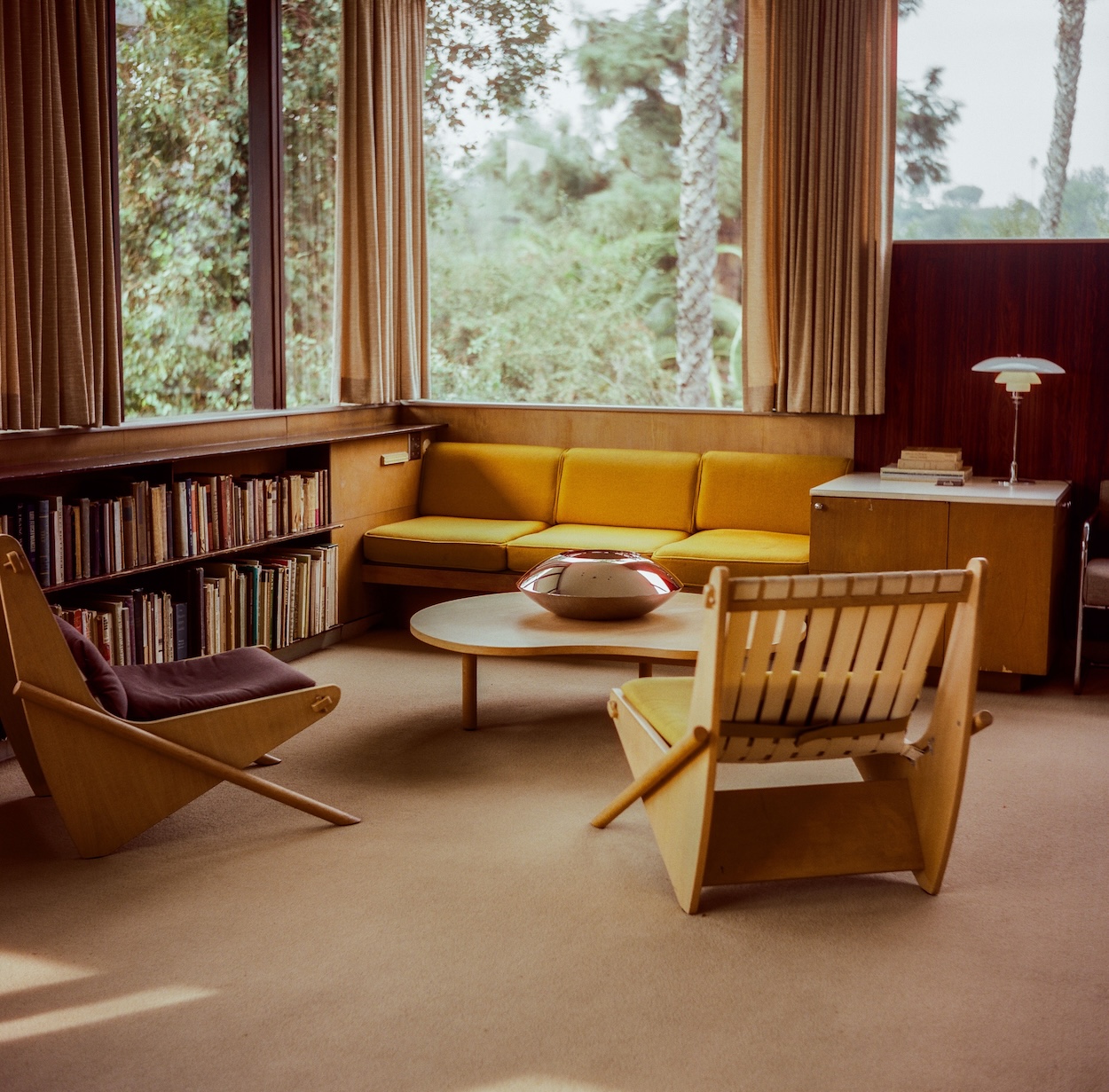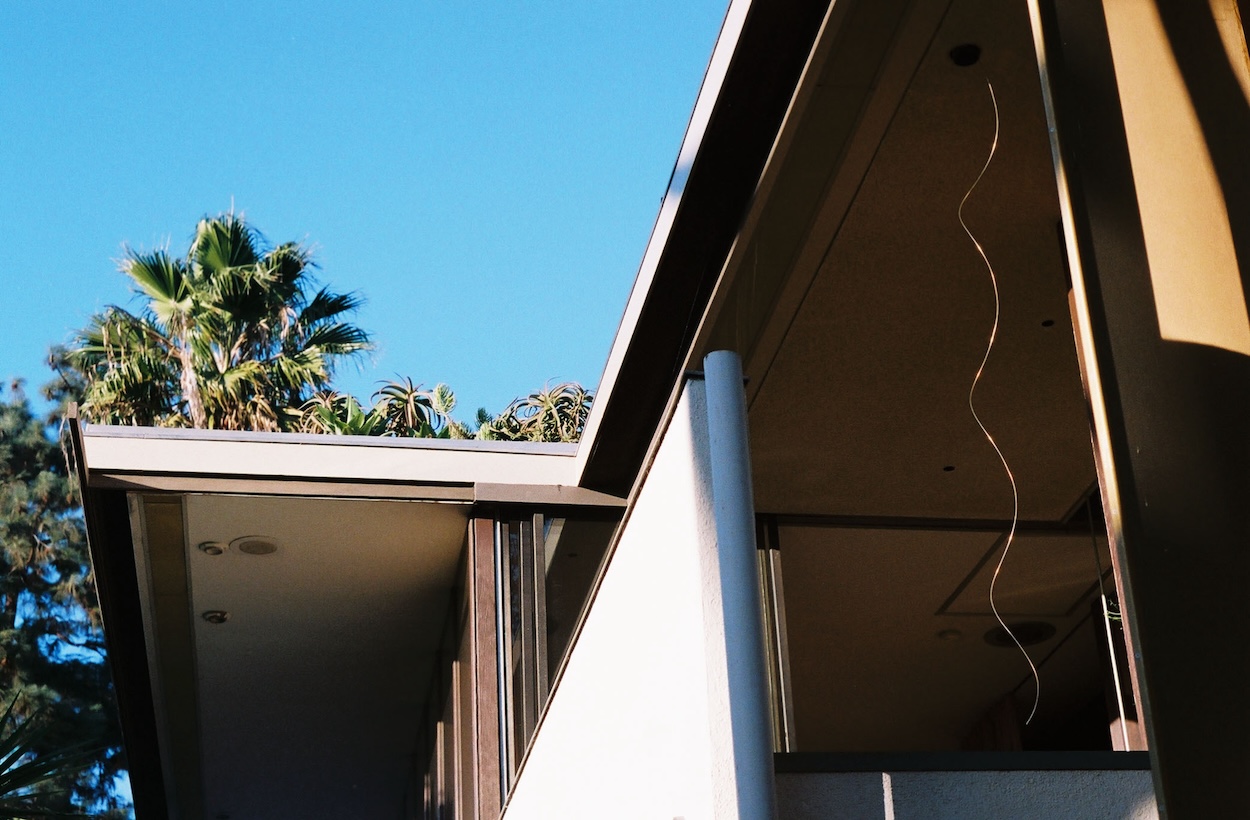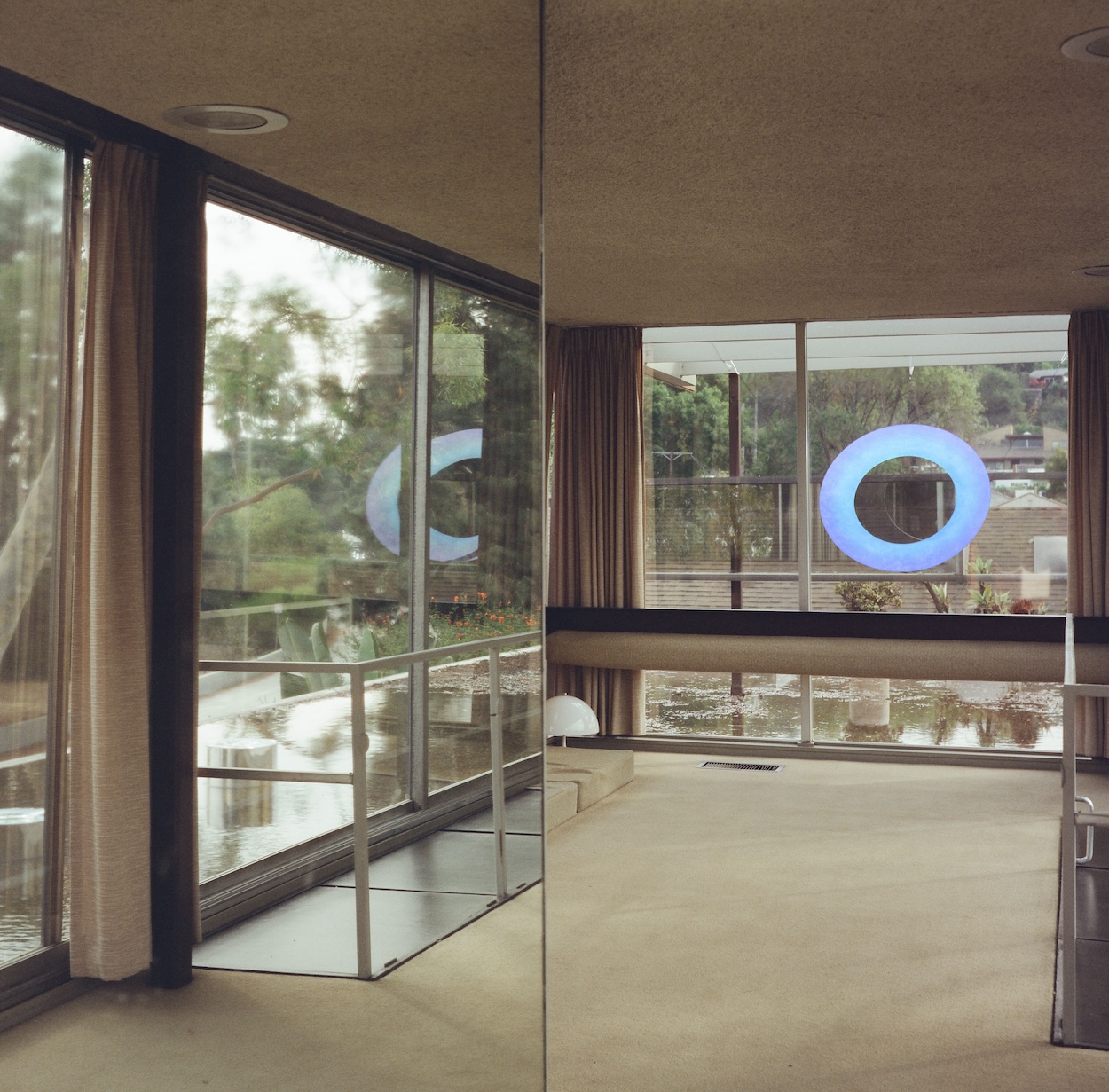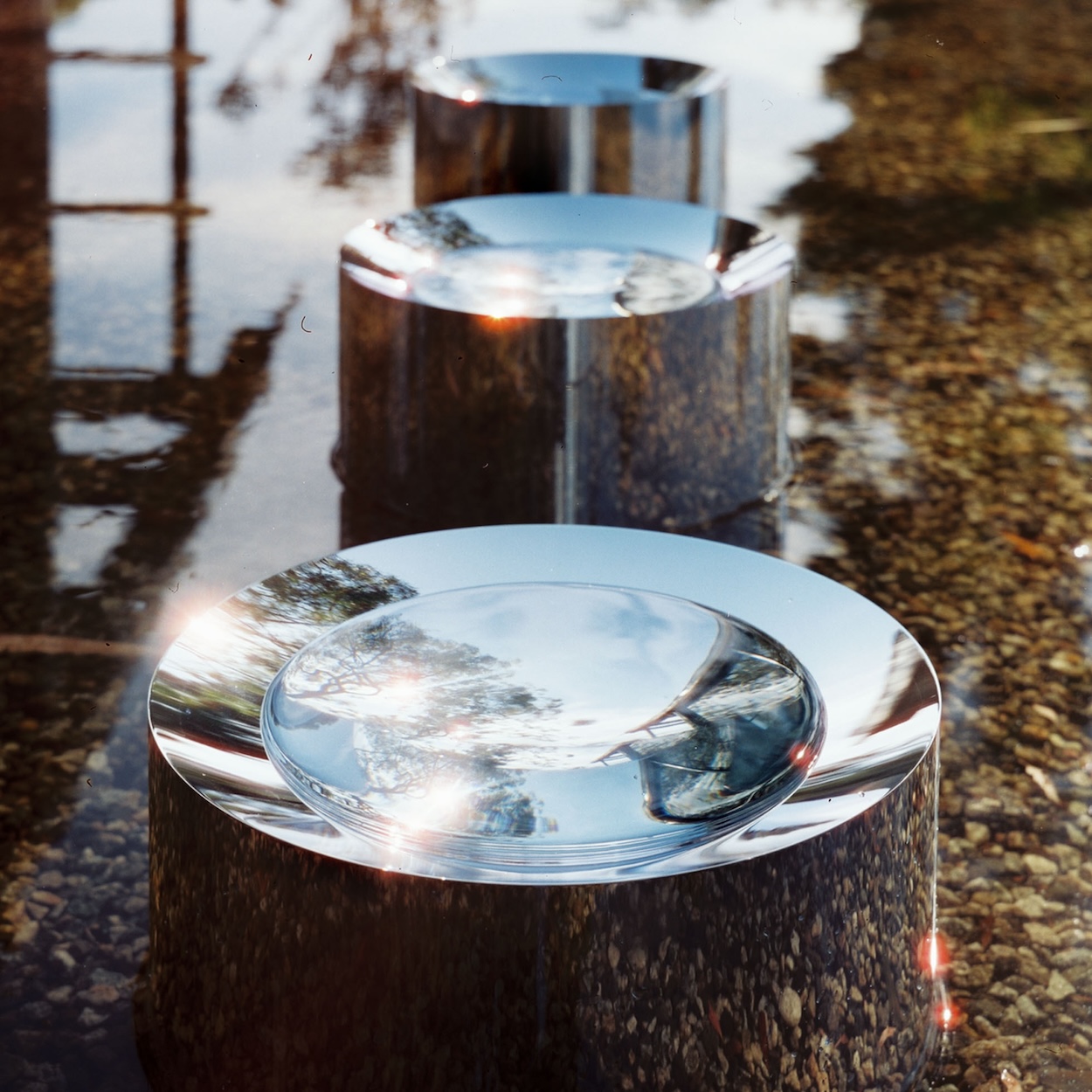With the Neutra VDL House as their stage, LA-based artists Lily Clark and Lachlan Turczan conduct “Confluence,” a dazzling interdisciplinary art show that balances the tactile and intangible. The manipulation of water is an integral component to both sculptors: through her mesmerizing practice, Clark calls attention to the liquid’s archetypal, droplet form. For Turczan, water is a medium with which to depict invisible natural forces like sound waves. While Clark’s approach is water first and vessel second, Turczan often uses his revelatory creations to sculpt the water itself.
Here, the artistic duo, also a couple, use their distinct methods to engage with the Neutra VDL House’s built environment and surroundings. “Richard Neutra’s philosophy of architectural biorealism—designing spaces that deepen our connection to nature—resonates with both of our practices,” Turczan tells Surface. “Neutra uses water and light to create spaces that feel both welcoming and restorative. My favorite feature is the water mirror on the top level, which, when viewed from a certain angle, seems to merge seamlessly with the Silver Lake Reservoir across the street.” With some of his reflective, basin-like sculptures, which embrace their surroundings like a wide-angle lens, Turczan is able to converse with the house’s water.
For Clark, exhibiting at the Neutra VDL House is a dream realized. “My family has lived in Silver Lake for 50 years, and I feel deeply connected to the architects—Neutra, Schindler, Lautner, Soriano, Harris—who shaped the character of this neighborhood,” she says. “Their work is integral to Silver Lake’s identity and deserves vigilant preservation. Being able to contribute to a dialogue about their legacy through this show feels incredibly meaningful to me.” Further, she adds, “The materials we gravitated toward—polished stainless steel, copper, acrylic, and local granite stone—echo Neutra’s palette, reinforcing the relationship between our pieces and the architecture.”
Installing the show strengthened their understanding of the architecturally significant property, as well as its lived-in character, and it encouraged them to adapt their own works. “Water, as always, finds its level, and through the pools and vessels we displayed, we could visually sense the leanings of the home—the subtle effects of age and gravity on its walls and floors,” Clark explains. “In some cases, we embraced these tilts, letting the water pool in unintended ways that spoke to the passage of time. In others, we used shims and supports to regain a level plane, creating a delicate balance between the home’s history and the precision our pieces required.”
Though there is an inherent material connection to their work, “Confluence” reveals the artistic, physical, and philosophical distances between Turczan and Clark’s pieces. “Lily’s work often highlights movement and gravity, guiding water through her sculptures to reveal its playful, joyful qualities,” Turczan says. “My work, on the other hand, tends to explore the extremes—focusing on stillness or amplifying water’s more intense, cymatic movements. Together, we’re only scratching the surface of water’s incredible range of expression.”
Similarly, Clark has observed that, for “Confluence,” Turczan’s works ask “the viewer to find stillness, noticing subtle details like the movement of wind on water or the gradual changes in light over time.” Counter to that, her work “focuses on interconnectedness, reflecting the way the home itself engages with water. The pools on every level of the house are part of a greater natural water cycle—rainwater falling on the rooftop, connecting to the middle level, and eventually nourishing the garden below.” She adds that while this is their first dual show, it’s really a three-piece collaboration with Neutra’s vision serving as the connective thread.
Ultimately, there is a poetry to their process, their complete pieces, and their compulsion to create. “Water is my medium of choice because it has nearly infinite facets to explore—the shapes it can take, the ways it can move, and the forces it reveals,” Clark says, noting that she’ll work with the material for the rest of her life. Both artists capture an element of the fluid phenomena, and allow viewers to bask in a sense of discovery that’s both so strange and so familiar.





